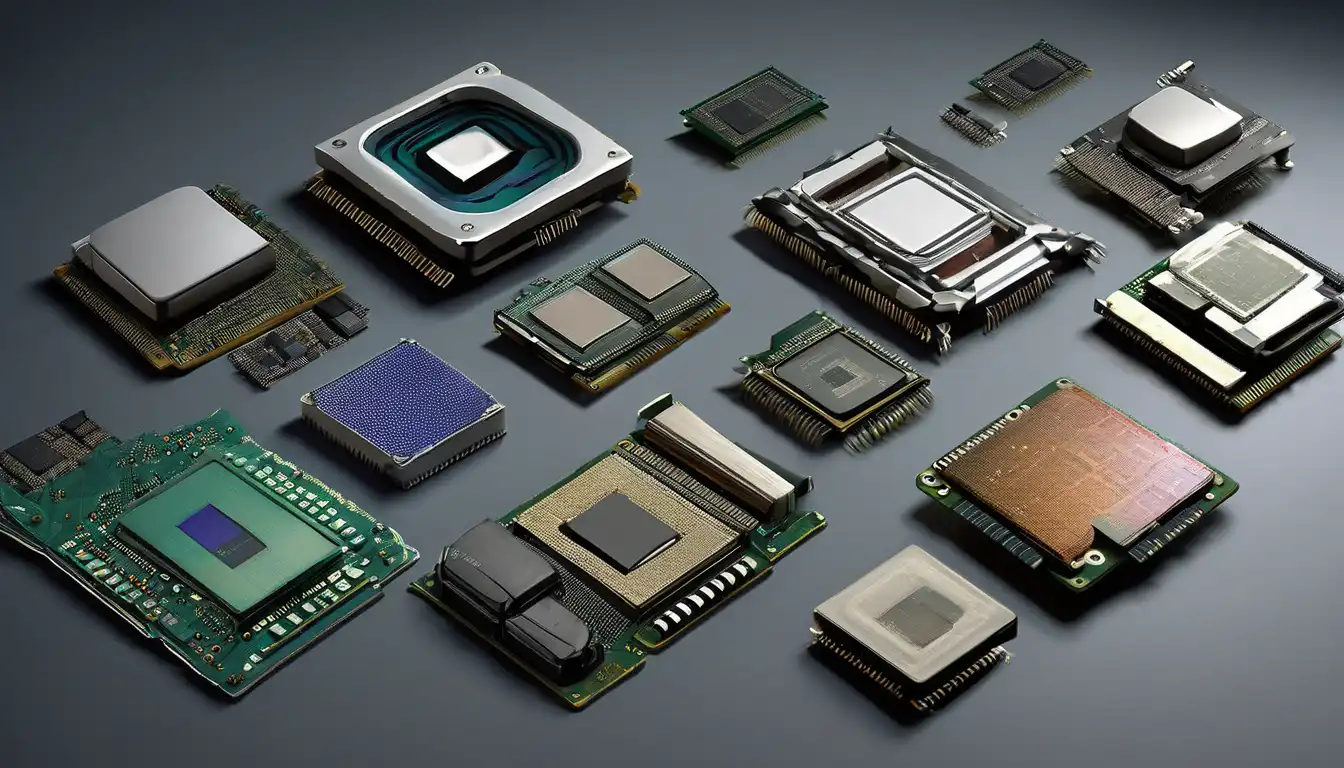The Dawn of Computing: Early Processor Technologies
The evolution of computer processors represents one of the most remarkable technological journeys in human history. Beginning with primitive vacuum tube systems in the 1940s, processors have undergone revolutionary changes that have fundamentally transformed how we live, work, and communicate. The first electronic computers, such as ENIAC in 1946, utilized approximately 17,000 vacuum tubes to perform basic calculations. These early processors were massive, power-hungry, and prone to frequent failures, yet they laid the foundation for everything that would follow.
The transition to transistors in the late 1950s marked the first major leap forward. Transistors were smaller, more reliable, and consumed significantly less power than vacuum tubes. This innovation enabled the development of more compact and efficient computers, making computing technology more accessible to research institutions and large corporations. The IBM 1401, introduced in 1959, became one of the first widely successful transistor-based computers, demonstrating the commercial potential of this new technology.
The Integrated Circuit Revolution
The invention of the integrated circuit (IC) in 1958 by Jack Kilby and Robert Noyce represented a quantum leap in processor technology. By integrating multiple transistors onto a single silicon chip, engineers could create more complex circuits while reducing size and cost. This breakthrough paved the way for the development of microprocessors - complete central processing units on a single chip. The first commercially available microprocessor, the Intel 4004, debuted in 1971 with 2,300 transistors and a clock speed of 740 kHz, capable of performing approximately 60,000 operations per second.
The 1970s witnessed rapid advancement in microprocessor design. The 8-bit processors like the Intel 8080 and Motorola 6800 brought computing power to hobbyists and small businesses, leading to the personal computer revolution. These processors featured improved instruction sets, better memory addressing capabilities, and higher clock speeds, making them suitable for a wider range of applications beyond scientific and military use.
The Personal Computing Era: 16-bit and 32-bit Processors
The 1980s marked the beginning of the personal computing boom, driven by increasingly powerful processors. The transition to 16-bit architecture with processors like the Intel 8086 and 80286 enabled more sophisticated software and larger memory addressing. The IBM PC, powered by the 8088 processor, became the standard for business computing, while competing architectures from companies like Motorola and Zilog offered alternative approaches to processor design.
The introduction of 32-bit processors in the mid-1980s represented another significant milestone. The Intel 80386, released in 1985, featured 275,000 transistors and introduced protected mode operation, virtual memory support, and hardware-based multitasking capabilities. These advancements made possible the graphical user interfaces and complex applications that would define modern computing. Meanwhile, reduced instruction set computing (RISC) architectures emerged as an alternative approach, emphasizing simplicity and efficiency over complex instruction sets.
The Clock Speed Race and Parallel Processing
The 1990s witnessed an intense competition among processor manufacturers to achieve higher clock speeds. Intel's Pentium processors, introduced in 1993, brought superscalar architecture to mainstream computing, allowing multiple instructions to be executed simultaneously. Clock speeds escalated from 60 MHz to over 1 GHz by the end of the decade, driven by improvements in semiconductor manufacturing processes.
As physical limitations began to constrain further clock speed increases, processor designers turned to parallel processing solutions. The multi-core era began in the early 2000s with dual-core processors like the Intel Pentium D and AMD Athlon 64 X2. By integrating multiple processing cores on a single chip, manufacturers could continue improving performance without significantly increasing power consumption or heat generation. This approach has evolved to include processors with dozens of cores for server applications and specialized accelerators for specific workloads.
Modern Processor Architectures and Specialization
Contemporary processor design has moved beyond simple performance metrics to focus on efficiency, specialization, and heterogeneous computing. Modern processors incorporate sophisticated power management features, advanced caching strategies, and specialized units for graphics processing, artificial intelligence, and cryptography. The ARM architecture, originally developed for mobile devices, has gained prominence across computing segments due to its power efficiency and scalability.
The rise of system-on-chip (SoC) designs has integrated processors with memory controllers, graphics units, and other components onto a single die. This approach has enabled the development of powerful yet energy-efficient devices for mobile computing, embedded systems, and data center applications. Companies like Apple have demonstrated the potential of custom processor designs with their M-series chips, which combine high performance with exceptional power efficiency.
Current Trends and Future Directions
Today's processor evolution focuses on several key areas. Artificial intelligence and machine learning workloads have driven the development of specialized neural processing units (NPUs) and tensor cores. Quantum computing represents the next frontier, with researchers developing processors that leverage quantum mechanical phenomena to solve problems intractable for classical computers. Neuromorphic computing, inspired by biological neural networks, offers promising approaches to energy-efficient AI processing.
The semiconductor industry continues to push the boundaries of Moore's Law through advanced packaging technologies, 3D chip stacking, and new materials like gallium nitride and carbon nanotubes. These innovations will enable continued performance improvements while addressing the challenges of power consumption and heat dissipation. As we look to the future, processor technology will likely become even more specialized, with architectures optimized for specific applications ranging from autonomous vehicles to edge computing devices.
The journey from vacuum tubes to modern multi-core processors demonstrates humanity's relentless pursuit of computational power. Each generation has built upon the innovations of its predecessors while introducing new paradigms that expanded what computers could achieve. As we stand on the brink of quantum and neuromorphic computing revolutions, the evolution of processors continues to shape our technological future in ways we can only begin to imagine. The relentless pace of innovation ensures that the processors of tomorrow will be as different from today's chips as modern smartphones are from the room-sized computers of the 1940s.
